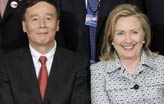Op-Ed Contributors
Similarity of a growth model
Updated: 2011-05-20 08:01
By Yukon Huang (China Daily)
China's growth model resembles that of the World Bank: it relies on implicitly subsidized loans to catalyze growth and makes the low rates possible by reducing the incentives to consume and by providing sovereign guarantees. By keeping interest rates relatively low, China can tap the savings of households to subsidize lending. This represents a transfer from current consumption of households in favor of investment.
If these investments generate high returns, the economy grows faster than it would have otherwise, enabling China to maximize household consumption over time. In reality, personal consumption has been increasing at an impressive rate of 8-9 percent a year. Thus, because its subsidized investment has been so successful and may not have occurred otherwise, China represents a model that has arguably led to sustainably higher, not lower, consumption levels - contrary to the common perception.
This approach is not new. The Commission on Growth and Development, which assessed the experiences of a group of successful developing countries (including China), noted the importance of high investment and outward-oriented strategies in accelerating growth.
But the World Bank and China business models share certain risks. Because lending is subsidized and benefits are difficult to evaluate, the potential for waste is significant. For China, this means that curbing current consumption in favor of higher investment is sustainable only if it generates rapid growth.
Currently, China's fiscal system is inadequate to meet its needs. So the government relies on State-owned banks to channel additional resources to local authorities, agencies and enterprises for infrastructure and production purposes. Over time, however, China's fiscal system must develop, so that loans driven by government priorities and not purely commercial objectives can be transacted through budgetary channels instead of banks. Major reforms will be needed to raise and allocate the necessary revenue to turn "quasi-fiscal deficits" into line items in the budget to improve transparency and reduce risks.
Because China's major banks are State-owned, the soundness of China's financial system depends on the creditworthiness of the State (much like the World Bank's viability rests on the solidity of its sovereign guarantees). But the country's high savings rate, huge foreign reserves and low external debt ratios imply that a significant surge in bad loans is likely to lead to a controlled scaling back of lending rather than a financial collapse.
The key question is whether the quality of government-sponsored expenditures continues to justify the transfers from ordinary consumers - and, if so, for how long. For China, the pattern of above-norm increase in productivity, surging FDI inflows motivated by double-digit returns, and consistently high GDP growth has until now suggested that investments have been efficient in the aggregate. But recent claims about waste - as exemplified by China's high-speed railways program - suggest that leaders need to pay more attention to the efficiency of particular programs.
The World Bank, for example, has also experienced periods when excessive lending to countries with poor economic policies did not generate adequate returns, contributing to debt-servicing problems later. Its response was to tighten lending standards.
And, just as the World Bank and other development banks face scrutiny on the broader impact of their lending activities including its poverty and governance implications, China needs to consider the sustainability of its growth process. This includes its effect on the environment and internal equity, which senior leaders have recognized as key challenges facing the country.
The author is a senior associate, Carnegie Endowment, and former World Bank country director for China.
(China Daily 05/20/2011 page9)
Specials

Comments on S&ED
The China-US Strategic and Economic Dialogue in Washington earlier this month achieved some remarkable results.

The song dynasty
There are MORE THAN 300 types of Chinese operas but two POPULAR varieties are major standouts

Sino-US Dialogue
China and the US hold the third round of the Strategic and Economic Dialogue from May 9-10 in Washington.